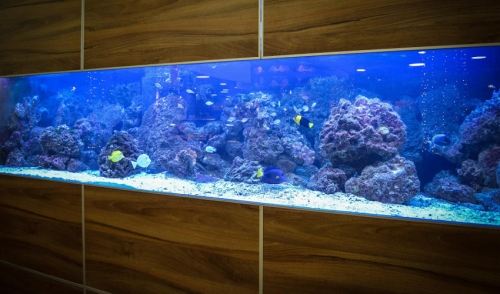Understanding your aquarium's pH is essential to keep the water healthy, and if adjustments are necessary, there are easy ways for any aquarium keeper to safely alter the overall pH without stressing their resident fish.
What Is pH?
pH is a measure of the water's acidity. The pH scale ranges from 1-14, with completely neutral water measuring a pH of 7. Lower numbers indicate more acidic water, while higher numbers indicate more alkaline or basic water. Different chemicals dissolved in the water, including organic compounds from decaying plants, leftover food or fish feces, affect the pH and change the neutrality of the water.
Is Change Essential?
While most aquarium fish have a recommended pH value for the best health, they are able to tolerate a wide pH range. Quick pH changes, however, can be devastating to fish, plants and biological filters, upsetting the aquarium's balance and making fish more susceptible to diseases. In general, if fish are healthy and thriving even at a less-than-optimal pH, it is often best to avoid altering the water's chemical balance.
The exception is for spawning fish. Aquarium hobbyists who plan to breed their fish will need to pay much closer attention to pH, as fish have a much narrower range of acceptable pH values that facilitate breeding. Fry are also less tolerate of pH values outside their optimum range, and will need a more carefully balanced aquarium for healthy maturation.
To Change the pH
If changes to the pH are necessary, it is important to test the water and learn what the current pH value is, rather than just a broad indication of whether the water is acidic or basic. Precise measurements of the pH will allow for careful adjustments instead of subjecting fish to a roller coaster of changes.
To lower pH…
If the pH is too high, adding a chunk of driftwood to the tank or a mesh bag of peat moss or almond leaves to the filter will help gradually lower the pH. Allowing plants to decay slightly before pruning them away can also have a small effect.
To raise pH…
Tanks with a high pH value can benefit from crushed limestone, a limestone structure, crushed or whole shells or a coral skeleton added to the tank, or growing microalgae can help rebalance the water towards a more neutral pH.
Any of these methods can lead to discolored water, and it is wise to soak additions in a separate container of tank water for a week or two before adding them to the aquarium. Chemical pH changers are also available but are not recommended for beginners, as they can affect a tank's balance more rapidly and can lead to quick changes that endanger fish. If chemical additives will be used, all instructions should be followed carefully and the tank closely monitored as it rebalances.
Adjusting an aquarium's pH can be a delicate procedure and isn't always necessary, but when pH changes are desirable, there are ways to make those changes without threatening fish or risking the health of the aquarium.






Comments